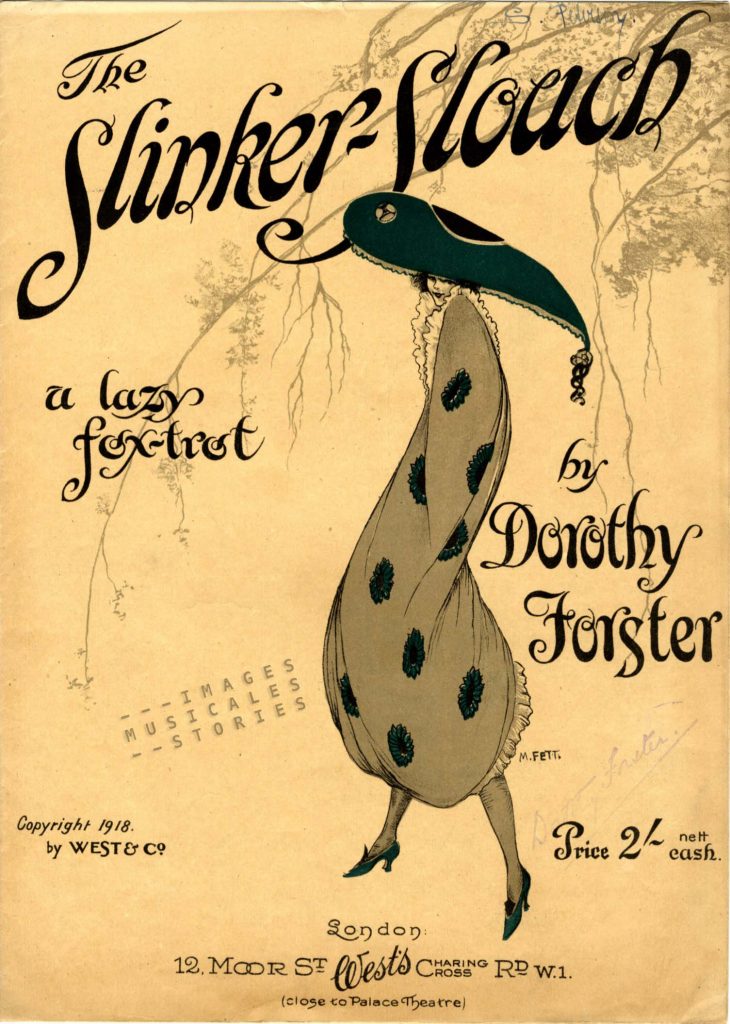
The sinuous walk displayed on this cover is called a slinker slouch. According to a correspondent of The Daily Mirror in 1913, the slinker slouch is a limp and careless lazy gait that accompanies the fashion of wearing gowns with flowing curves. To achieve the perfect slinker slouch you had to move with rounded shoulders while lowering your weight on the hips. The look was complete when you trusted your hands into your pockets and affected a dead-bored expression. The journal warned that this pose was not without danger as the contraction of the chest could cause “lung troubles and digestive derangements”.
A New Zealand newspaper coined the indolent stride like this: “The modish woman’s walk has been christened the Slinker Slouch. The smart woman beats the sardine in her backbonelessness.”
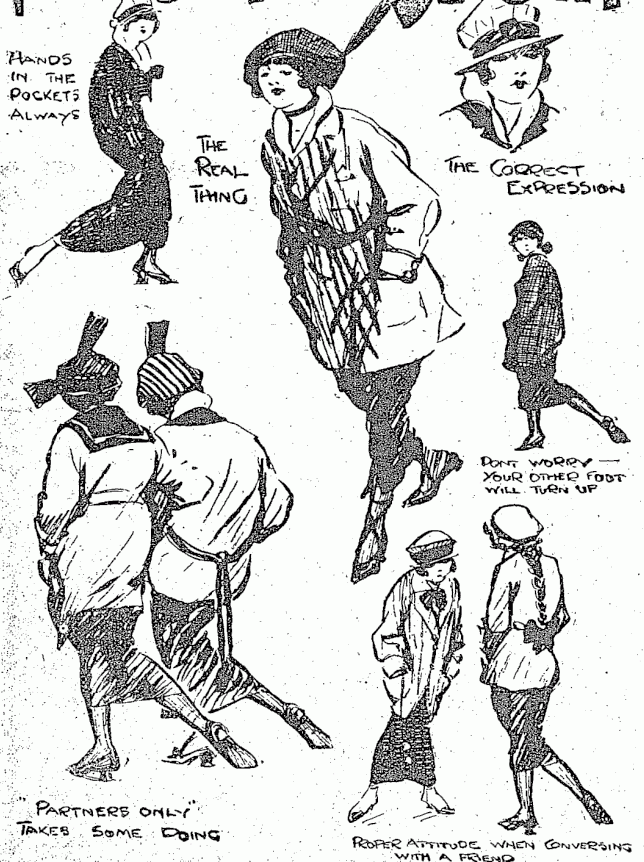
It was not long before the slinker slouch slunk into oblivion. And by 1914 another newspaper tutted that the very slim slinker-slouched woman was to be considered ugly and deformed.
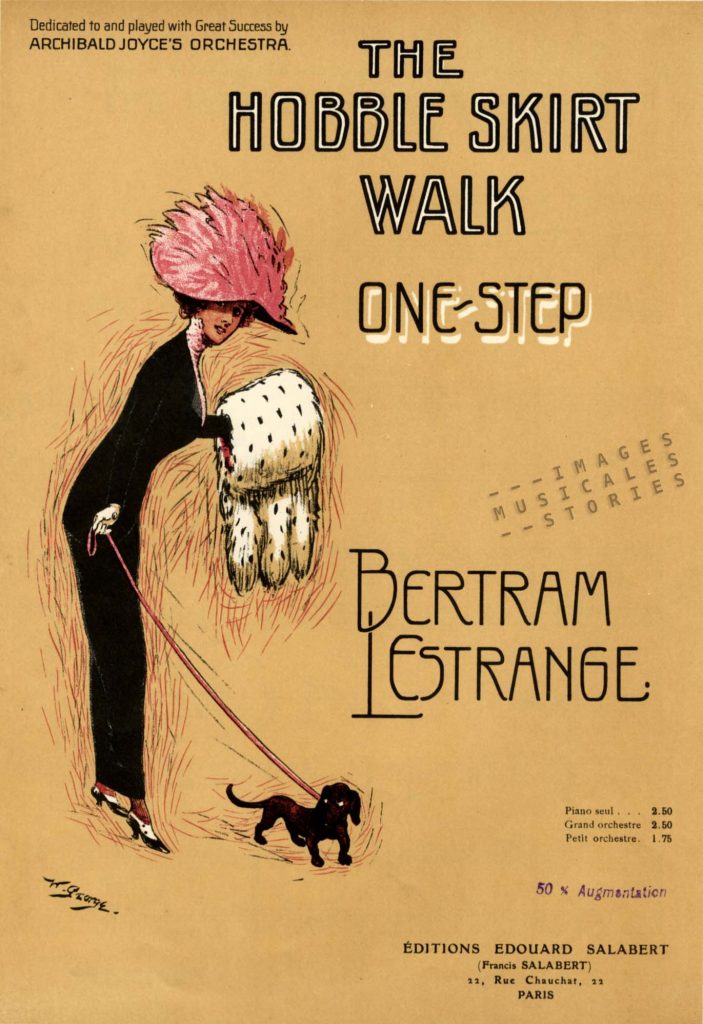
Around the same time the hobble skirt made its appearance. French fashion designer Paul Poiret claimed authorship of this extremely slim and long skirt. Allegedly he was inspired by a picture of Mrs Berg sitting next to Wilbur Wright in his aircraft. To stop the wind playing with her skirt she had tied it together beneath her knees with a rope.
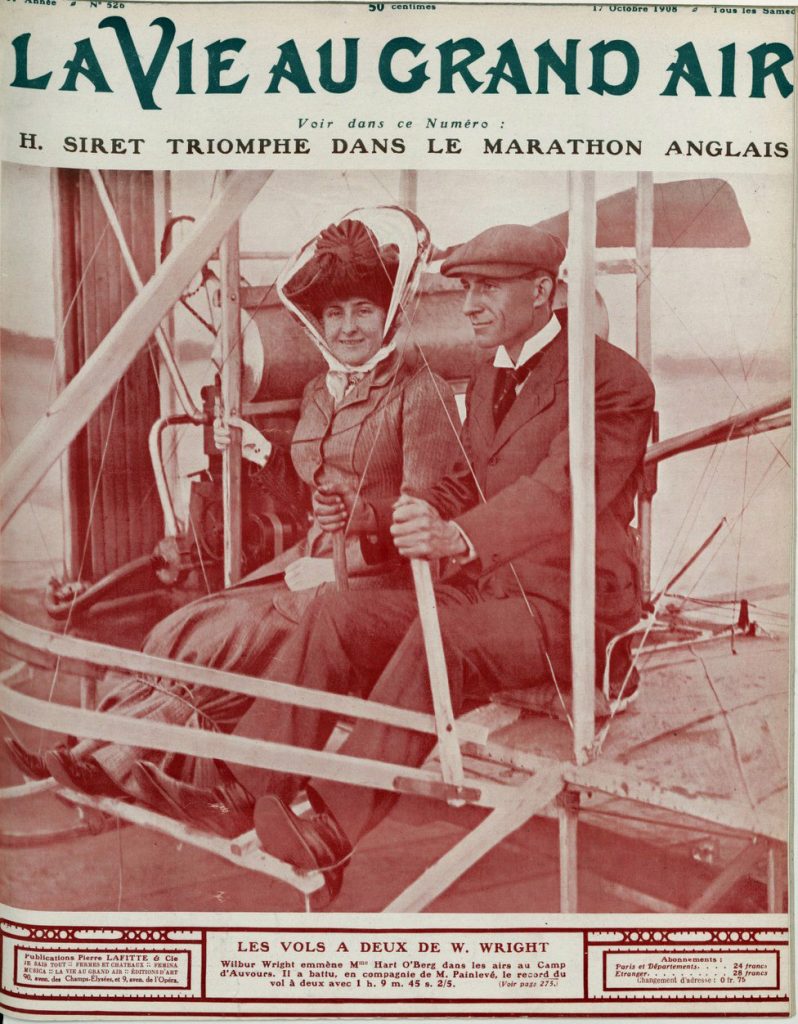
Women wearing a hobble skirt had to take tiny steps, much like a geisha would. Of course, this highly unpractical garment prompted cartoonists and composers to lampoon the helpless struggles to cross streets or to climb stairs.
We found earlier examples of weird walking vogues even as early as the 1860’s, the Grecian bend and the Alexandra limp.
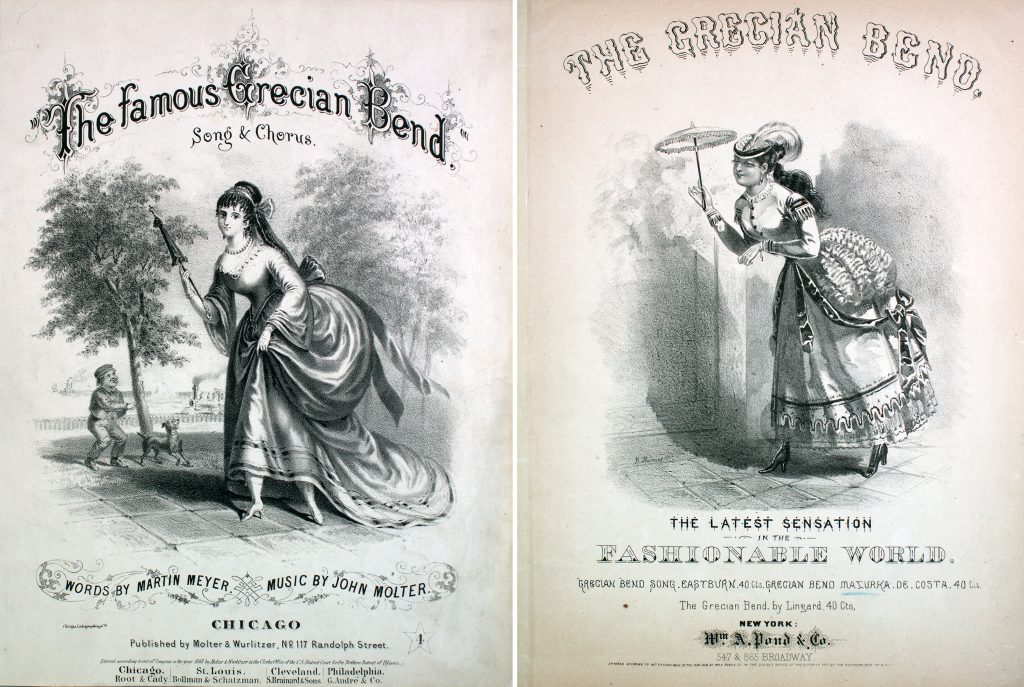
When the hoop skirt lost popularity around 1868 it was replaced by a framework known as the bustle. The large bell-like silhouette of the crinoline was flattened out at the front and sides but with a lot of fabric to the back to create a pannier. A bustle served as the base upon which all that fabric could be pinned. To keep their balance women had to bend over, and this stooped silhouette was called the Grecian bend. It supposedly got its name from ancient Grecian statues, bending gracefully forward.
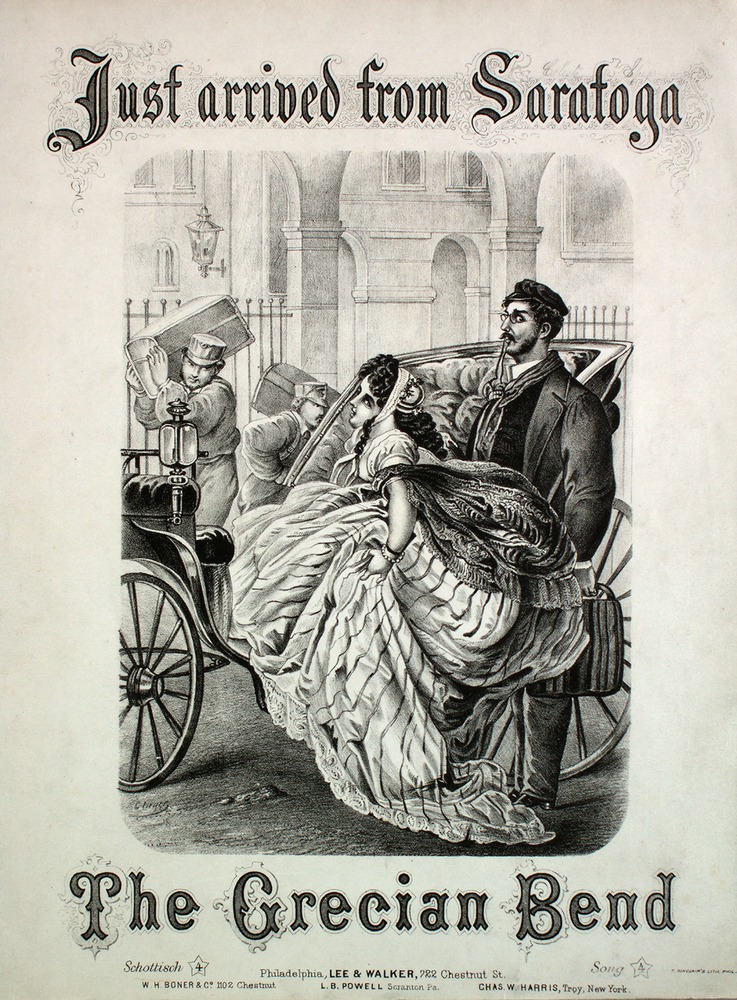
But the Grecian bend was rather tiring and painful. Moreover it was annoying when riding in carriages because the bustle made it difficult to sit upright.
This new female, stooped silhouette provided ample opportunity for composing songs. One played a jeu de mots and funnily shows a man going on a drinking spree dreaming of Greece…
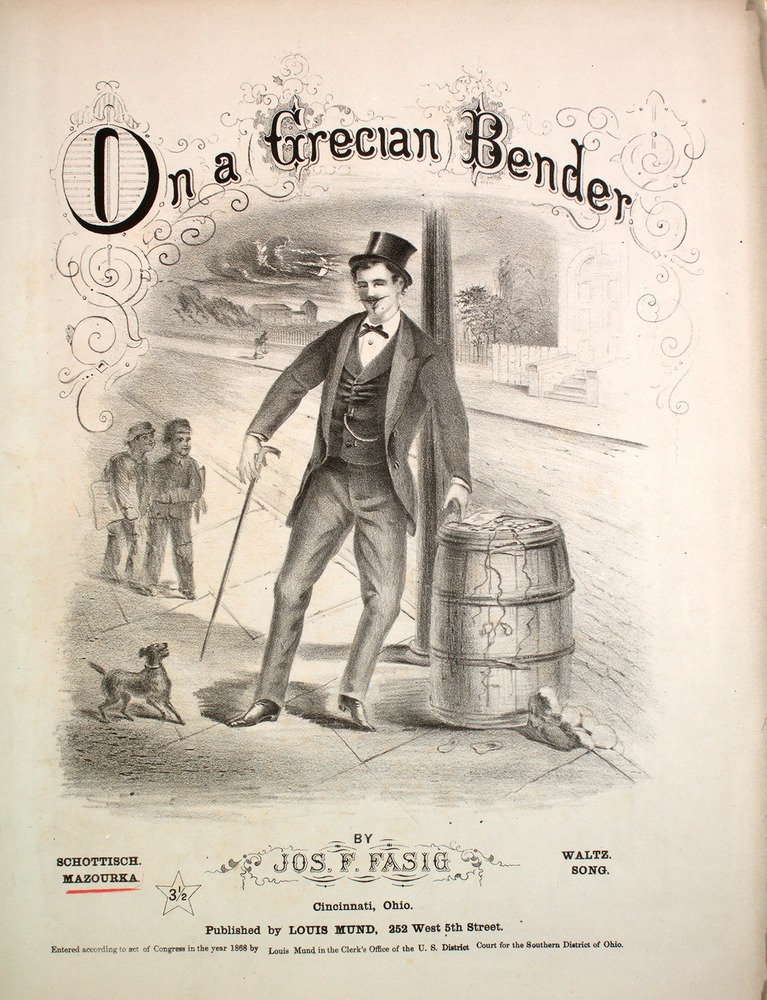
At about the same time, fashionable British women started to affect the Alexandra limp. This hobbling gait was in imitation of Alexandra, princess of Wales, the wife of the future King Edward VII, otherwise known as ‘Bertie’.
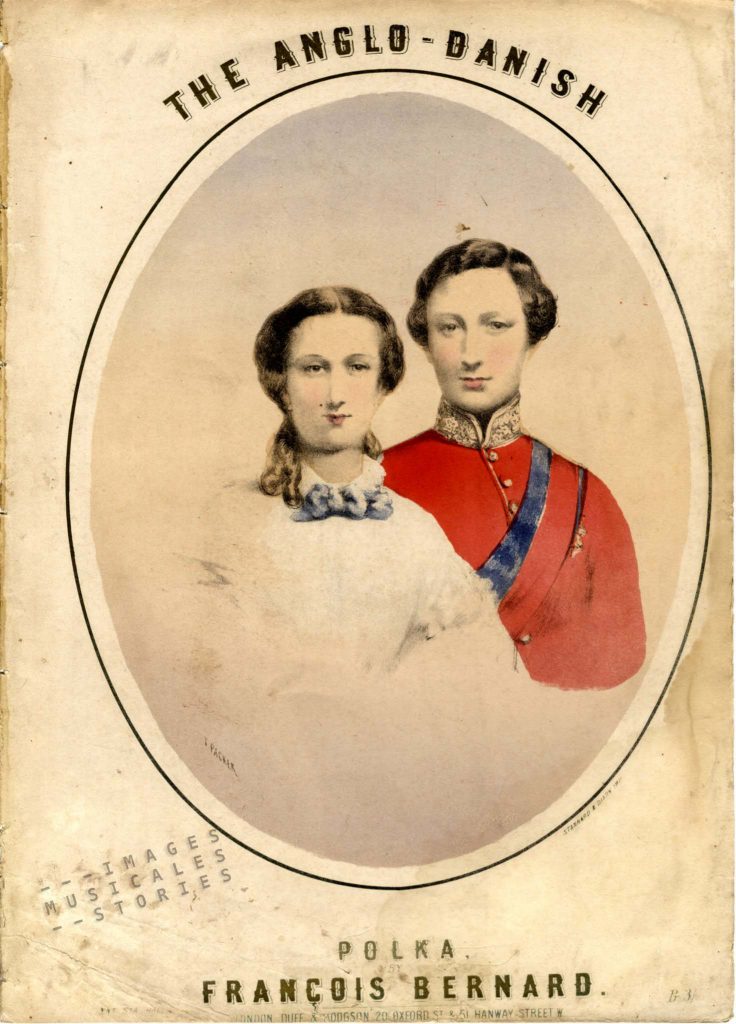
The Danish Alexandra was a fashion icon and hugely popular. After contracting rheumatic fever in 1867, she developed a limp. Women were so used to fervently imitate her that they even started to mimic her limp. For that, they went as far as wearing odd shoes or shorten one heel. Everything for a hobbling walk!
